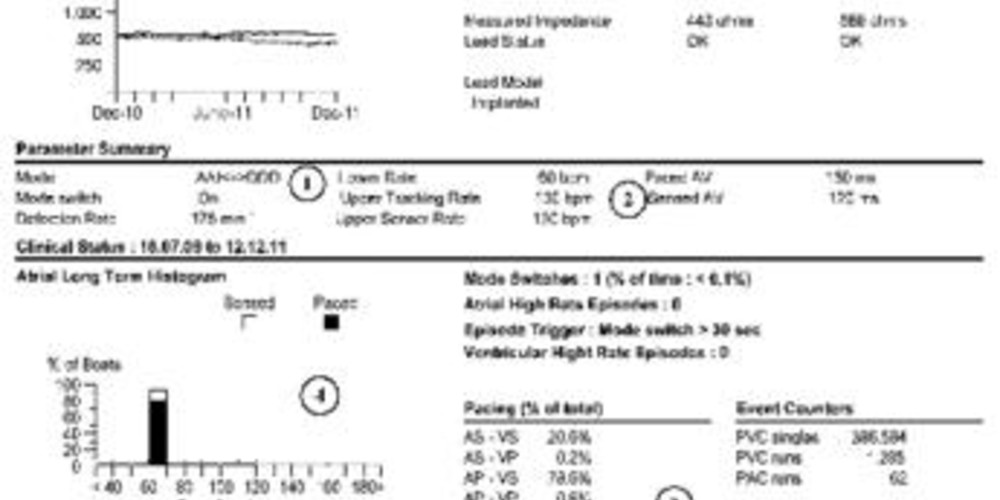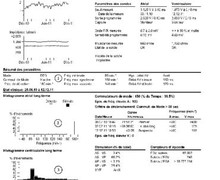Rate response failure
Tracing
Manufacturer Medtronic
Device PM
Field Programming for exercise
N° 24
Patient
63-year-old man with ischemic cardiomyopathy, EF of 54%, narrow QRS with inferior sequelae, on beta blocker therapy; implantation of an Adapta dual-chamber pacemaker for sinus bradycardia; interrogation of the pacemaker 6 months after implantation; notion of exertional dyspnea.

Graph and trace
- programming in AAIÛDDD mode without rate response;
- minimum rate at 60 beats/minute and maximal tracking rate at 130 beats/minute; the rate response is not programmed although the maximum rate responsive frequency corresponds to the rate response in the event of mode switching due to atrial arrhythmia (fallback in DDIR mode);
- MVP mode functions properly with almost 100% of spontaneous ventricles;
- long-term atrial histogram showing an absence of rate response and a chronotropic incompetence in this active patient; the atrial rate remains between 60 and 70 beats/minute throughout the follow-up;
- long-term ventricular histogram which also shows this rate limitation; the ventricles are spontaneous.
Other articles that may be of interest to you






This first page of the initial interrogation allows an almost complete evaluation of the important elements of patient follow-up:
In this patient, this chronotropic incompetence must be corrected by the programming of the rate response and the AAIRÛDDDR pacing mode.